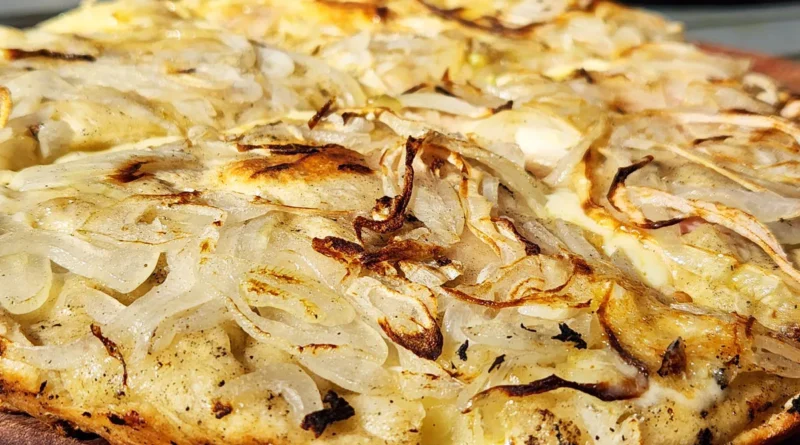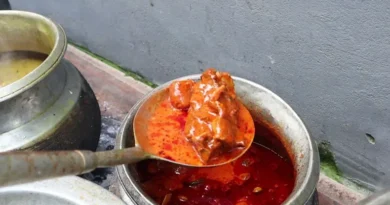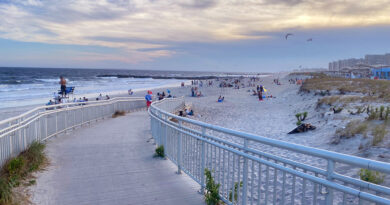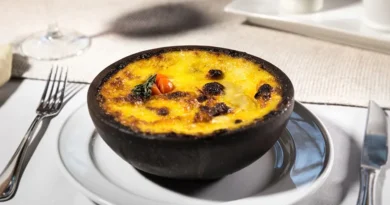The Buenos Aires Pizzerias to Know
Pizza is a big deal in Argentina, and its capital is peppered with iconic pizzerias. Here are the Buenos Aires pizzerias—and Argentine pizza styles—to know.
Growing up in Buenos Aires, I have clear memories of my dad, almost every evening after work, stopping to get a slice of pizza. Even when he reminisces about it now, he says his taste buds ran amok just thinking about that perfect combination of melted fresh mozzarella, tomato sauce, and baked dough. He simply had to get his daily fix.
Back then, in the late 1970s, we lived around the corner from La Mezzetta, a hole-in-the-wall pizzeria in Buenos Aires whose pies have a cult following to this day. But there are many other iconic pizzerias, doing many styles of pizza, in this city. We’ll get into the best pizzerias in Buenos Aires and the types of Argentine pizzas and pizza crusts to know, but first, a little context.
Why Is There So Much Pizza in Argentina?
Starting in the 1880s, Argentina actively promoted immigration as a state policy. The country’s thriving economy and peace were the main drivers. And the government’s plan worked: By 1914, a third of the population was foreign-born.
Immigrants from the same country celebrated and preserved their shared cultural heritage. They established sports clubs, like the one I belong to, Societá Italiana di Tiro a Segno. They created bilingual schools, like St. Brigid’s (founded by the Irish community), and built hospitals, like Deutsches Hospital. Immigrants left their mark on everything from architecture to music, sports, and, of course, food. But of all the immigrants who came to Argentina, the Italians perhaps made the most lasting impact on local culture.
Official statistics show that nearly 1.5 million Italians settled in Argentina between 1857 and 1947, bringing along their cultural heritage and craftsmanship. Our Spanish gradually became peppered with words of Italian origin, and our society adopted and adapted Italian culinary traditions, like fresh pasta and pizza. In Buenos Aires, the people grew to love pizza so much that it became part of the city’s heritage.

No one knows exactly when and how pizza was introduced, but there are accounts of fainá and fugassa sold in the neighborhood of La Boca in the early 1890s. Both words come from the Genoese dialect: Fugassa means focaccia, and fainá is also known as farinata, a dense, polenta-like pancake made with chickpea flour and olive oil. Fugassa, a dough round with lots of onion, evolved into fugazzeta, pizza topped with cheese and sliced onions, and fugazzeta rellena, a variation of fugazzeta with cheese or ham and a cheese-stuffed crust. (In Argentina, the more cheese, the better.) The 1930s saw a pizza boom when many of the pizzerias we can still visit today were established, especially along Avenida Corrientes.

Types of Pizza Crust in Buenos Aires
Besides your fainá, fugazzeta, and fugazzeta rellena, there’s the napolitana pie (not to be confused with napoletana, or Neapolitan), which is topped with tomato sauce, cheese, fresh tomato slices, and garlic. But the most popular type of pizza in Buenos Aires, according to the Asociación de Pizzerías y Casas de Empanadas de la República Argentina, is a mozzarella (or “muzza”) pie sprinkled with oregano and green olives.
In Argentine pizza, the ratio of cheese to crust is definitely skewed toward the cheese. The abundance of ingredients in the New World influenced how Italian immigrants cooked. Flour, tomatoes, and cheese were readily available, so their pizzas became thicker and cheesier than in the old country. Although mozzarella remains the most popular cheese used, others are sometimes incorporated, such as provolone, Quartirolo, or blue cheese.
There are three types of pizza crust in Argentina: al molde, media masa, and a la piedra. The pizza al molde (“in the pan”) crust is about an inch thick and is baked in a round tin. As the dough is wetter and proofed three times, the result is a springy, even crumb with a crusty bottom. (This is somewhat similar to Detroit-style pizza in the U.S.)
The media masa crust is thinner than al molde, with a thicker crumb because it’s proofed twice. It’s a medium-depth crust, and the most characteristic Argentine pizza style. A la piedra is a thin, stone-baked crust. This dough requires less water and yeast than the other types and uses some olive oil. It’s proofed twice, allowed to rest for 24-48 hours, and then baked on a pizza stone at very high temperatures.

The Porteño Tradition: Moscato, Pizza y Fainá
Home to most of the city’s theaters, Avenida Corrientes is synonymous with nightlife and entertainment, particularly during its heyday in the 1930s and ’40s. Hungry patrons would spill out of theaters straight into restaurants and pizzerias late into the night, hence its nickname: Corrientes, the street that never sleeps.
Over time, a new tradition was adopted in Buenos Aires: You’d eat a slice of fainá, the chickpea pancake, together with (that is, on top of) your slice of pizza and wash it down with moscato wine. Since moscato is rather sweet and floral (and cheap), the secret is to drink it very cold, according to diehard fans.

“Moscato, pizza y fainá” is also the opening song title on the debut album of Memphis la Blusera, an Argentinean blues band. The lyrics describe the vibrant atmosphere and excitement of Avenida Corrientes: the neon lights, the constant flow of people, and patrons ordering slices of pizza with fainá and a glass of moscato.
At any of the following pizzerias, you can try out the moscato, pizza y fainá tradition yourself. You should also know that many locals still eat pizza with a knife and fork in Buenos Aires (unless they are eating it on the go), and we all love to hate on the useless paper napkins found at most pizzerias: They feel slippery and aren’t absorbent at all. Instead, they seem to spread the grease around evenly and you end up with equally greasy fingers. Don’t let it ruin your enjoyment!
Iconic Pizzerias in Buenos Aires
The best, most unmissable Buenos Aires pizzerias were all established in the 1930s. These spots represent serious tradition, and are beloved by many porteños. Here are the five to try.
Banchero
Many immigrant communities settled in La Boca, but the Genoese stood out. So much so that their dialect, xeneixe (also zeneize), became synonymous with the neighborhood and the supporters of Club Atlético Boca Juniors, the local soccer team. A Genoese family, the Bancheros, opened a pizza spot in La Boca in 1932. A member of the family, Don Agustin Banchero, is credited with inventing the fugazza con queso, a culinary milestone in Buenos Aires. He found the original fugassa a bit dry and thought the addition of cheese would improve it. Banchero’s motto is “La verdadera pizza,” the true pizza.
Pizzeria Banchero is still alive and well (Av. Corrientes 1300, map), and its pizza is so popular that the family has opened four branches, including one in Miami Beach. Banchero specializes in pizza al molde, the deeper-dish pizza. The pizzaiolos hand down the craft to younger apprentices, and they’ve never had to hire a pizza chef from outside.

Pizzeria Güerrín
Established in 1932, Pizzeria Güerrín (Av. Corrientes 1368, map) became the favorite haunt of actors and theatergoers. The five ovens churn out between 1,600 and 2,100 pizzas a day. Raw pizzas are cooked directly on the oven floor at high, even heat, which produces a delicious crispy base and perfectly melted cheese. The original oven, Horno 1, fueled by the native hardwood quebracho like the other ovens, is kept burning 24/7. There’s always enough food to feed the hungry crowds waiting outside the door.
Güerrín is known for its media masa style: not too thick and not too thin. The most popular kinds of pizza are mozzarella, fugazzetta rellena, and the house special, which combines lots of cheese, roasted red peppers, ham, and olives. You’ll see patrons sipping a cold beer or a glass of moscato or helping themselves to soda water from a traditional siphon wrapped in plastic mesh.

Angelín
The story goes that Oscar Vianini, founder of Pizzeria Angelín (Av. Córdoba 5270, map), started selling thin, cheeseless pizzas outside soccer stadiums in the early 1930s because they were easy to stack when cold and to transport on his bicycle. This type of pizza, which made him famous, is called pizza de cancha because “cancha” is Argentinean Spanish for soccer pitch. He then opened a pizzeria in the Villa Crespo neighborhood with a traditional wood-burning oven in 1938.
Angelín’s pizza de cancha (aka pizza canchera) is thin and crispy, topped with a rich, garlicky tomato sauce, and is bigger than the regular pizzas here. Try the cancha slice, but save room for the other pizzas, which are al molde. They come out of the oven with a deliciously crispy base, and the sauce, which is different from the one used for the cancha, has the perfect acidity to complement the cheese. Frank Sinatra loved this pizza so much that he once sent an autographed photo, which takes pride of place on the wall.

La Mezzetta
The hole-in-the-wall Pizzeria La Mezzetta (Av. Álvarez Thomas 1321, map), dating to 1939, is the place I would go with my father to pick up pizzas to eat at home. I was about 5 years old and still remember the pervading mouth-watering smell.
La Mezzetta is so small, it doesn’t have room for tables. You eat your slice de parado, standing at one of the long counters along the walls. In 2020, it was featured in a Netflix series called Street Food Latin America, but entire generations of locals have enjoyed its pizza al molde since its inception. La Mezzetta is also known for its fugazzeta rellena, which overflows with melted cheese and sliced onion piled up high. If there’s room for dessert, let it be a slice of its moist ricotta cake.

El Cuartito
The line outside El Cuartito (Talcahuano 937, map) starts before opening time at noon. Many people eat a slice or two while standing at the wooden counters—an Old Country custom that is called comer al paso in Spanish (roughly, eating on the go). But many choose to sit at the no-frills Formica tables. Established in 1934, the walls of El Cuartito are covered in the memorabilia of two local passions: sports and tango. Sports commentators, news reporters, and sports personalities have frequented this restaurant for decades.
The pizza napolitana here was soccer idol Diego Maradona’s favorite. However, many people come for the mammoth fugazzeta rellena and the humble but delectable mozzarella pizza. They also come for the experience, to eat surrounded by the pennants and old photos.

Why do Argentinians love pizza so much? Because it’s delicious; it’s easy to eat and to share. So many memories are made around slices of pizza: birthday and anniversary celebrations, family gatherings, and childhood memories of helping nonnas knead dough in the kitchen. Pizza is part of who we porteños are, and where we came from; it’s part of our identity and heritage. We received a dish and made it our own and, today, it represents us.
About the author: Ana Astri-O’Reilly is an Argentine-born travel and food writer and blogger who is fully bilingual in Spanish and English. You can find her work here, and read her musings here.




